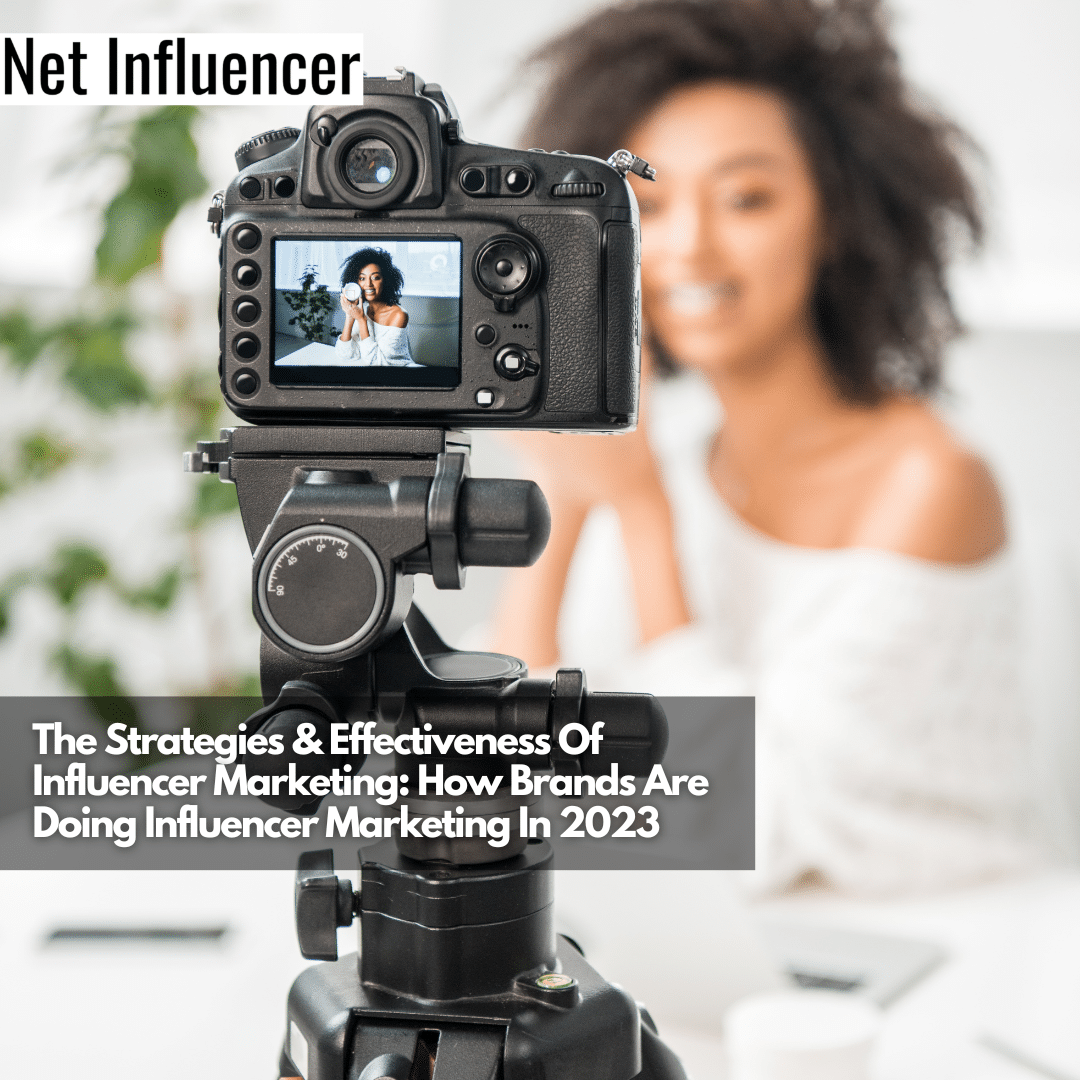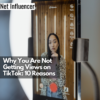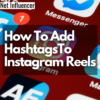Strategy
The Strategies & Effectiveness Of Influencer Marketing: How Brands Are Doing Influencer Marketing In 2023
Influencer marketing continues to grow as a top marketing strategy for today’s most popular brands. As traditional legacy strategies like print ads and TV commercials continue to dwindle, more brands than ever are turning towards social media and brand partnerships to reach their target audience. GRIN’s Strategies & Effectiveness of Influencer Marketing: 2023 Report highlights key insights into the effectiveness of influencer marketing strategies. Read on to learn more about the results.
Over the past decade, brands have been turning more towards influencer marketing to grow brand recognition and broaden their customer base. Today, the influencer marketing industry is worth over $16 billion, which is a 250% increase in size since 2019. Traditional advertising continues to take a backseat as the younger generations spend more time on social media and many legacy brands are carving out big budgets to rethink their strategies.
In GRIN’s Strategies & Effectiveness of Influencer Marketing: 2023 Report, we get an inside look at the influencer marketing strategies of their customers and how well they did in 2022
Survey Methodology
GRIN’s Strategies & Effectiveness of Influencer Marketing: 2023 Report includes results from a 2023 survey of 307 GRIN customers. The customers were asked questions around how they conducted their influencer marketing efforts in 2022. The report highlights “how marketers incorporate influencer content, how brands budget and pay creators, their favorite social media platforms, and the overall effectiveness of using influencer marketing as a strategy.”
The survey also includes feedback on where GRIN customers believe influencer marketing is heading over the next two to three years. According to the results, roughly 98% of GRIN customers say they see positive results through influencer marketing. Over 80% of surveyed brands reported using influencer marketing to “improve their brand awareness, social media channels, and content production.” More than 60% of surveyed brands say they’ve experienced an increase in web traffic and sales.
Three Key Takeaways
1. GRIN customers reported finding influencers as their biggest challenge (48% of respondents). The second and third biggest challenges were reporting success and having enough time (46% each).
2. Instagram was the number one platform for influencer marketing amongst GRIN customers (99%). Tik Tok is also on the rise (86%).
3. The majority of a GRIN customer’s marketing budget was spent on paid social media advertisements (50%).
What Does This Mean for Influencer Marketing?
The first takeaway calls out some of the biggest challenges faced by brands when developing an influencer marketing strategy. Finding influencers was cited as the number one challenge (48%), followed by reporting success (46%) and having enough time (46%). Other challenges include scaling an influencer marketing program (45%), getting the right content from creators (39%), and relationship management (28%).
If you’re an influencer, taking a proactive approach by reaching out and pitching to brands may be beneficial. Spend time researching brands in your niche and make sure you have your portfolio and information ready to send to interested parties. Brands who have trouble finding influencers may benefit from a bit of competitive research. For example, if you’re a cosmetics startup, take a look at the influencers your competitors use and consider reaching out. GRIN also has a guidebook on how to find influencers, which is mentioned in the report.
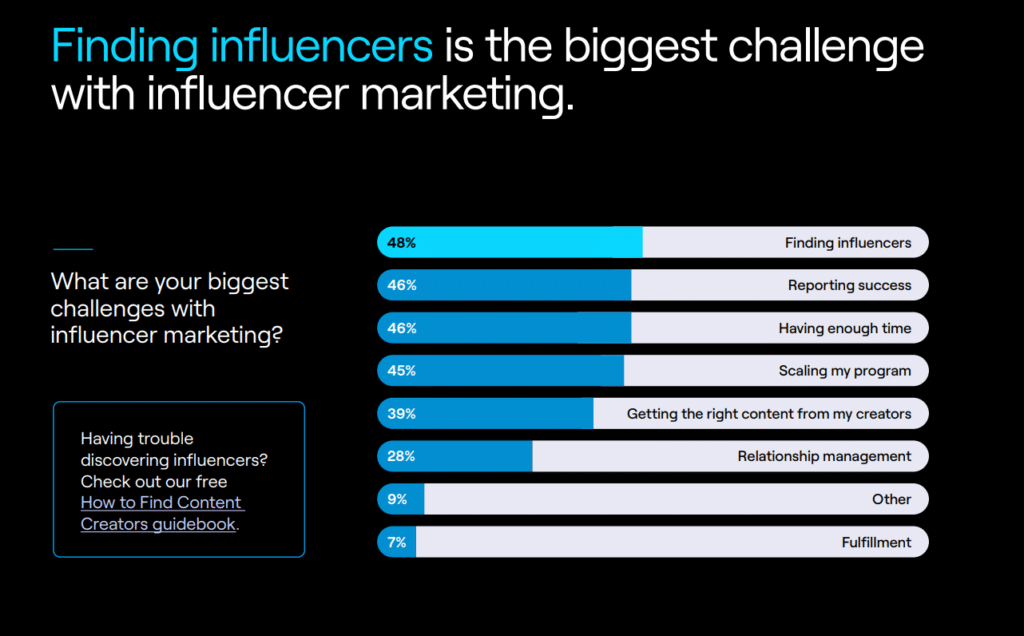
The second takeaway shows Instagram as the reigning platform for influencer marketing, at least among GRIN’s customers. TikTok is also gaining traction and the report mentions 68% of GRIN customers tried TikTok for the first time in 2022. Facebook experienced a 10 point decline from 2021 and was used by 38% of those surveyed. YouTube wasn’t a specific choice in the survey, but 100% of the 26% of respondents who reported using “other” wrote in YouTube as their choice.
Instagram continues to hold strong as a focus of many brands’ influencer marketing campaigns. The platform has a longer history than TikTok and has worked to keep up with trends and changes through the roll out of the Instagram Reels feature. Influencers who haven’t yet expanded to TikTok should consider testing it out, as the platform continues to grow in popularity, especially among the younger generations.
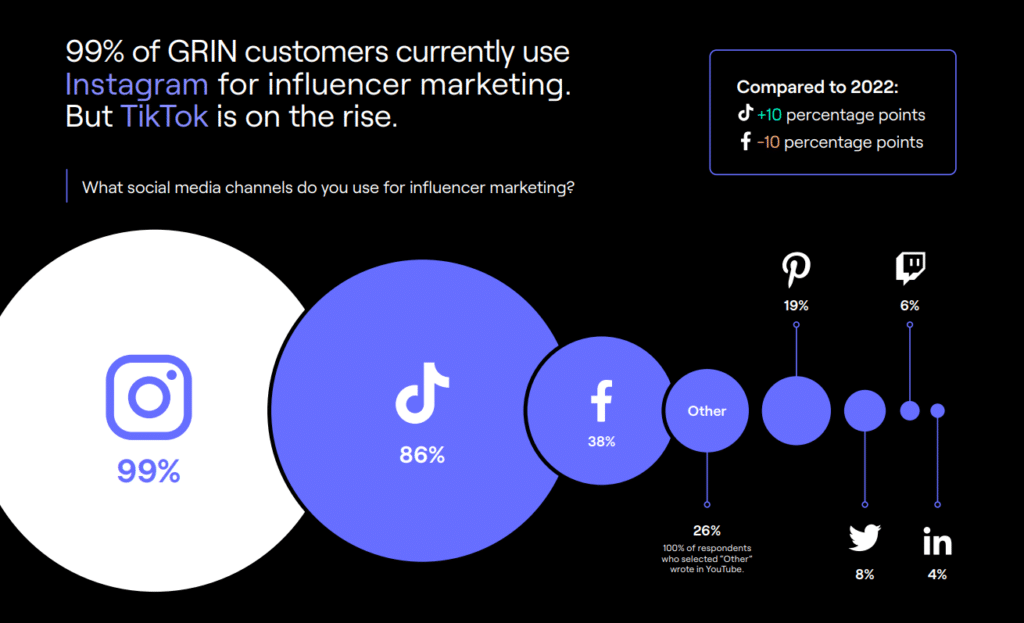
The third takeaway shows that half of the surveyed brands spend the majority of their marketing budget on paid social media ads. Only 15% of brands mentioned spending the most on influencer marketing as well as Google search ads. Event marketing and SEO was cited as the top spend for 4% of respondents and 1% still spends the majority of their budget on traditional commercials.
These results are also relative to how large a brand is and how much money they have to spend on influencer marketing. The report revealed that most of the brands surveyed operate with an influencer marketing budget of between $100,001 and $500,000 (36%). Budgets include team salaries, influencer payments, product gifting, and software. Although only half of GRIN customers spend the most of their budget on influencer marketing, the majority seem to dedicate a considerable amount, which is good news for influencers.
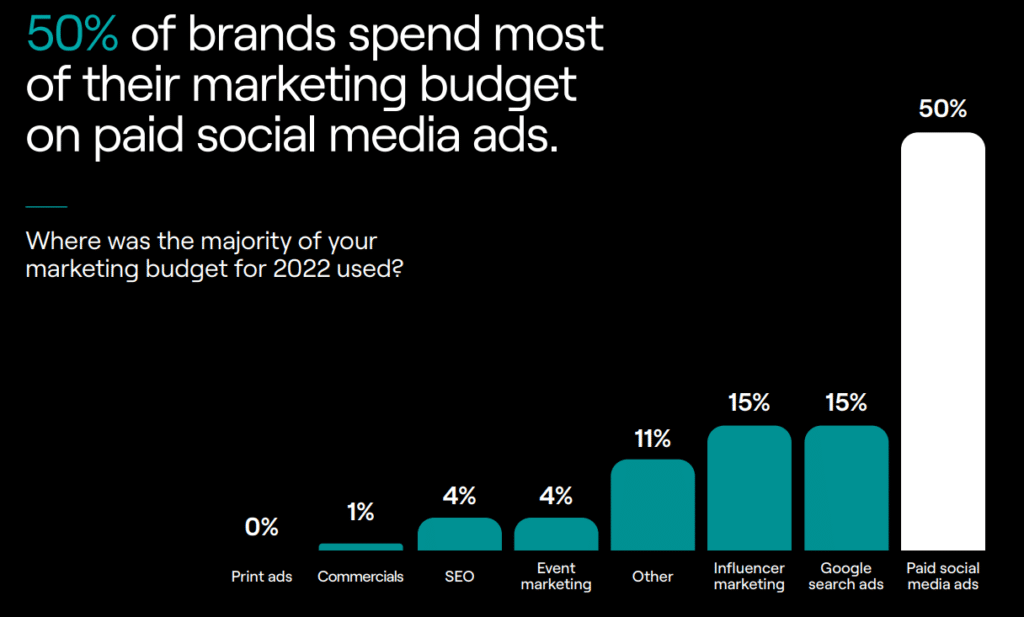
In summary, GRIN’s latest report contains valuable insights into the world of influencer marketing and how the strategy continues to gain traction amongst top brands. This is good news for influencers looking for lucrative brand partnerships, as trends suggest influencer marketing will continue to grow as a priority.
Link to the Report
The Strategies & Effectiveness of Influencer Marketing: 2023 Report can be found on GRIN’s website, along with additional insights and research reports on the latest influencer marketing strategies, trends, and analytics.


